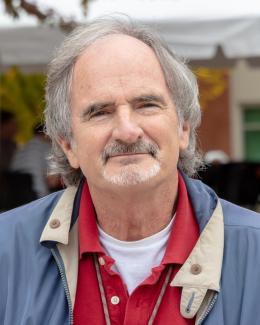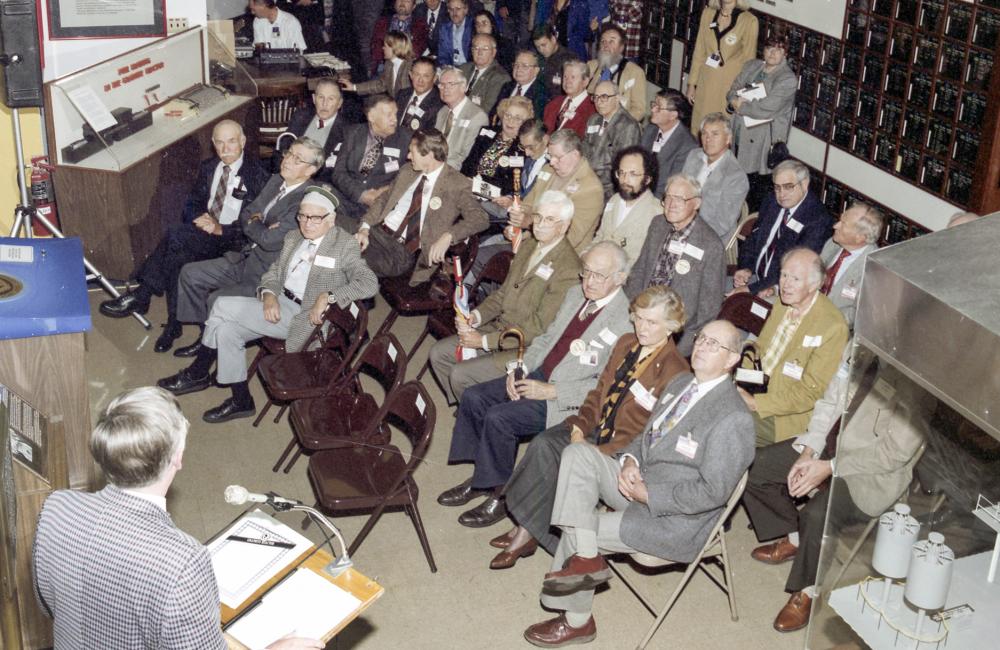The year 1993 marked the 50th anniversary of the Graphite Reactor's startup, on Nov. 4, 1943. A good number of Manhattan Project veterans were still around at the time, and ORNL invited them to a luncheon and ceremony at the Lab.
Former Director Alvin Weinberg, in fact, was still spry enough to play tennis, and arrived with a bandage on his head from a spill he had taken on a city court. He had covered the bandage, not too successfully, with a trucker's cap perched on top of the gauze.
The attendees reminisced over lunch about working on the Pile, as it was called. The Lab's newsletter editor was also invited to hear the stories. Reuben McCord told how he left the University of Chicago, where it was snowing, for Clinton. "People were still swimming here. I thought it was paradise!" McCord said. He also described a dressing down he received from Enrico Fermi for mishandling uranium. "Was it in English or Italian?" someone asked. Fermi would sometimes revert to his native tongue.
That exchange provoked an awestruck realization among younger attendees that they were in the same room with people who had worked with the renowned Fermi to win World War II by developing a nuclear weapon before the Nazis could.
Although the wartime circumstances were extraordinary, some normalcy was preserved. Dorothy Silverman, a secretary, monitored the 1944 World Series over a headset and reported the action to the workers "to keep up morale." Ray Oakes, who brought a pocketful of souvenirs, recalled how he and Louis Slotin -- another famed Manhattan Project figure -- knocked a jammed fuel slug loose with sledgehammers.
Chemical separations pioneer Waldo Cohn recalled the secrecy. He described how phosphorous-32 separated at Oak Ridge was secretly shipped to Berkeley, Calif., so that the substitution of uranium production for phosphorus-32 production at the cyclotron there wouldn't be noticed by spies. John Gillette recalled a guard who was convinced the big project was to build a gigantic storage battery.
Richard Fox, who would work in ORNL's Instrumentation & Controls Division for several more years, recalled the fiscal constraints of the early project at the University of Chicago -- the chart recorder that charted the Chicago pile's first chain reaction was procured at a salvage shop they called "Dirty Dan's." The owner of the dingy shop was not aware of the nickname they had given him and was not pleased when Fox phoned the office for permission to buy and let the moniker slip out. "I'm here at Dirty Dan's ... oops."
Fox migrated to Oak Ridge, like many others, for the X-10 pilot reactor project. The "Critical reached" inscribed in the Graphite Reactor's famous logbook is believed to be in Fox's hand.
The group retired after lunch to the Graphite Reactor, where remarks were made. Weinberg, in his cap, described "this wonderful old reactor," and that it was "hard for us old timers to convey the wonderment of the time -- and it was wonderment -- that we could use uranium to produce energy. It was an unreal aspect to us."
Weinberg also recalled that Eugene Wigner had misgivings that the public would ever accept a technology that was used to such terrible effect in war.
"Fifty years later, the first nuclear era is over," Weinberg told his old co-workers. "I'm sorry that few of us here will be around for the second, but I'm delighted that ORNL is remembering its origins."



